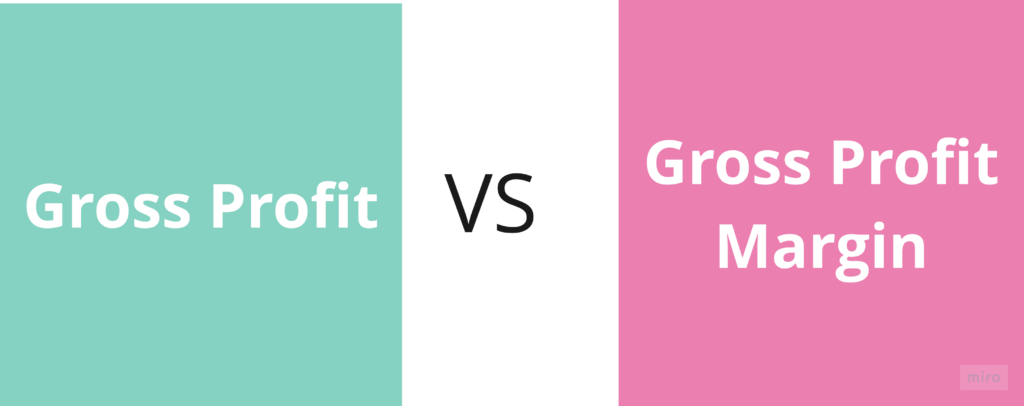The primary reason for the existence of most, if not all, businesses is to generate profit, i.e., income in excess of expenses. Now, profits can be affected by innumerable factors like demand, price, cost of production, and more. A crucial metric to determine a company’s profitability is gross profit.
Businesses need to analyse their gross profits to understand how revenue is being generated and keep tabs on their financial health. Here’s everything you need to know about gross profit.
You will Learn About:
What is gross profit?

Gross profit is the value of a business’s profit after deducting the production costs (of its goods/services) from total revenue. In other words, to calculate the gross profit, the company needs to deduct the cost of goods sold (COGS) from the revenue generated for the time period in consideration.
A business registers its gross profit on the income statement of the company. This metric tells how effective a company is in leveraging its resources and managing the production of its goods and services.
In order to do that, a business must calculate its total sales and include all the goods and services it has sold in a given financial period. However, the company must not include the sale of fixed assets such as equipment or building in this calculation. For example, a clothing company will calculate its total sales only from the amount of money it generates from selling its stock of clothes.
Another commonly used term, along with gross profit, is net profit. The difference between gross profit and net profit is that while gross profit gives the income after deducting production costs from the revenue, the net profit is the profit a company has earned after deducting all expenses and costs from the revenue.
A company having a low gross profit and a high net profit may imply that it is not earning from its core activities of production or sale of its goods/services but, instead, is making profits from other sources. This may not be a healthy business practice in the long run.
Gross Profit – Main Highlights!
- Gross profit is a company’s profit after deducting the costs incurred in producing and selling goods/services from the revenue.
- Gross profit takes into consideration only variable costs and not fixed costs.
- The gross profit margin for a company is calculated by dividing the difference between revenue and COGS (gross profit) by revenue.
- The gross profit margin helps a business compare its efficiency in production over time.
What does gross profit indicate?
Gross profit is an essential metric for a business as it assesses how effectively a company uses various elements during production, such as labour, supplies etc., when manufacturing and selling a good or service. In other words, gross profit indicates to a business the costs it needs to incur to generate revenue. Naturally, when these costs increase, the business makes less profit and vice versa.
It is important to note that gross profit considers only the variable costs that affect a business’s output level, like the cost of materials, direct labour, shipping, etc. The fixed cost a company must incur, irrespective of its production activities, is not included in the gross profit.
Gross profit formula
Let us now see how to calculate gross profit.
Gross profit = Net sales – Cost of goods sold
Note: Net sales in the formula can be replaced by total revenue earned.
Use Tickertape Stock Screener to find the gross profit of a company. There are over 200 filters that can help you find the best stocks as per your preference. Explore Now!
Gross profit vs gross profit margin

Another important metric used by businesses is the gross profit margin. Let’s understand this in detail.
So, firstly what is the gross profit margin? – Gross profit margin is one of the three profitability ratios (operating profit margin and net profit margin being the other two). The gross profit margin ratio is a percentage obtained by dividing gross profit by the total revenues. The gross profit margin helps a business compare its efficiency in production over time.
While gross profit is an absolute number, the gross profit margin ratio is expressed as a percentage.
Gross profit margin = Revenue – COGS / Revenue x 100
Let’s take a look at a simple example to understand the gross profit margin
Assume a business has registered a revenue of Rs. 1,00,000. Let’s say its COGS was recorded at Rs. 30,000. Then, the gross profit margin of the company is –
= 1,00,000 – 30,000 /1,00,000
=70,000/1,00,000
=0.7 x 100 = 70%
Typically, a gross profit margin above 50% is considered healthy. Industries like tech and banking have over 80-90% gross profit margins! The food industry’s gross profit margins range from 40-60%.
A company can compare its gross profit margin ratio with the industry average to analyse its true standing. It would not be wise to compare industries from different sectors. For instance, a 50% gross profit margin is considered low in the financial sector, whereas the same 50% is considered excellent concerning other sectors.
Companies often wonder how to increase the gross profit ratio. The first step would primarily be to control the cost of production. If it increases substantially, the revenues are bound to decrease, directly affecting the company’s profitability. The company should also examine various elements of its production, right from fixed costs to variable costs and more, to understand what costs can be cut down and how efficiency can be improved.
Conclusion
Gross profit is a key financial term used to analyse a company’s performance. It is arrived at by deducting COGS or production costs from total revenue. Gross profit is a crucial benchmark of a business’s profitability and financial health. Investors can compare the margins and profits of various companies (from the same sector), irrespective of their size and sales volumes, by looking at their gross profits. It empowers investors to make wiser investment decisions.
FAQs
Did you Like the Explanation?
Authored By:
I'm a Senior Content Writer at Tickertape. With over 5 years of experience in the financial industry and insatiable curiosity, I bring complex financial topics to life in a way anyone can understand. My passion for educating others shines through in my approachable writing style.



